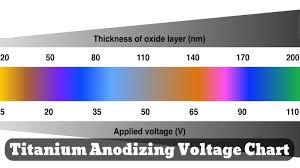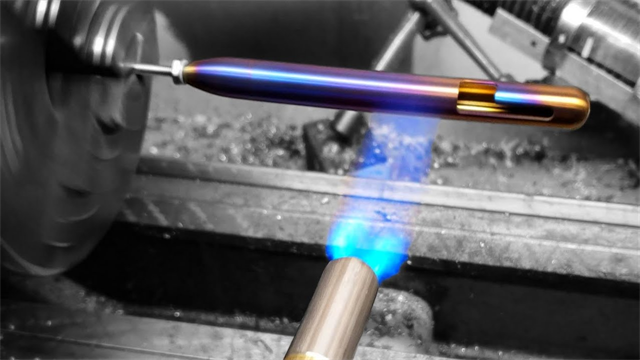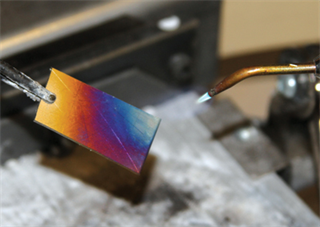Titanium can be colored using a variety of processes, including anodizing and flame coloring. Here's an overview of these processes:
Anodizing
Anodizing is an electrolytic process that creates a layer of oxide on the surface of the titanium. The thickness of the oxide layer can be controlled to produce a range of colors, from bronze to blue to purple. Anodizing also improves the corrosion resistance of the titanium surface.



Flame Coloring
Flame coloring involves heating the surface of the titanium to a high temperature to create a layer of oxide. The thickness of the oxide layer can be controlled by adjusting the temperature, and the resulting colors can range from golden yellow to blue to purple. Flame coloring is a simpler process than anodizing, but the resulting colors may be less durable.

Both anodizing and flame coloring can be used to produce a range of colors on titanium, which makes it a popular material for jewelry, art, and other decorative applications. The resulting colors are produced by the interference of light waves with the oxide layer, rather than by the addition of pigments, which means that the colors are more durable and resistant to fading over time.

